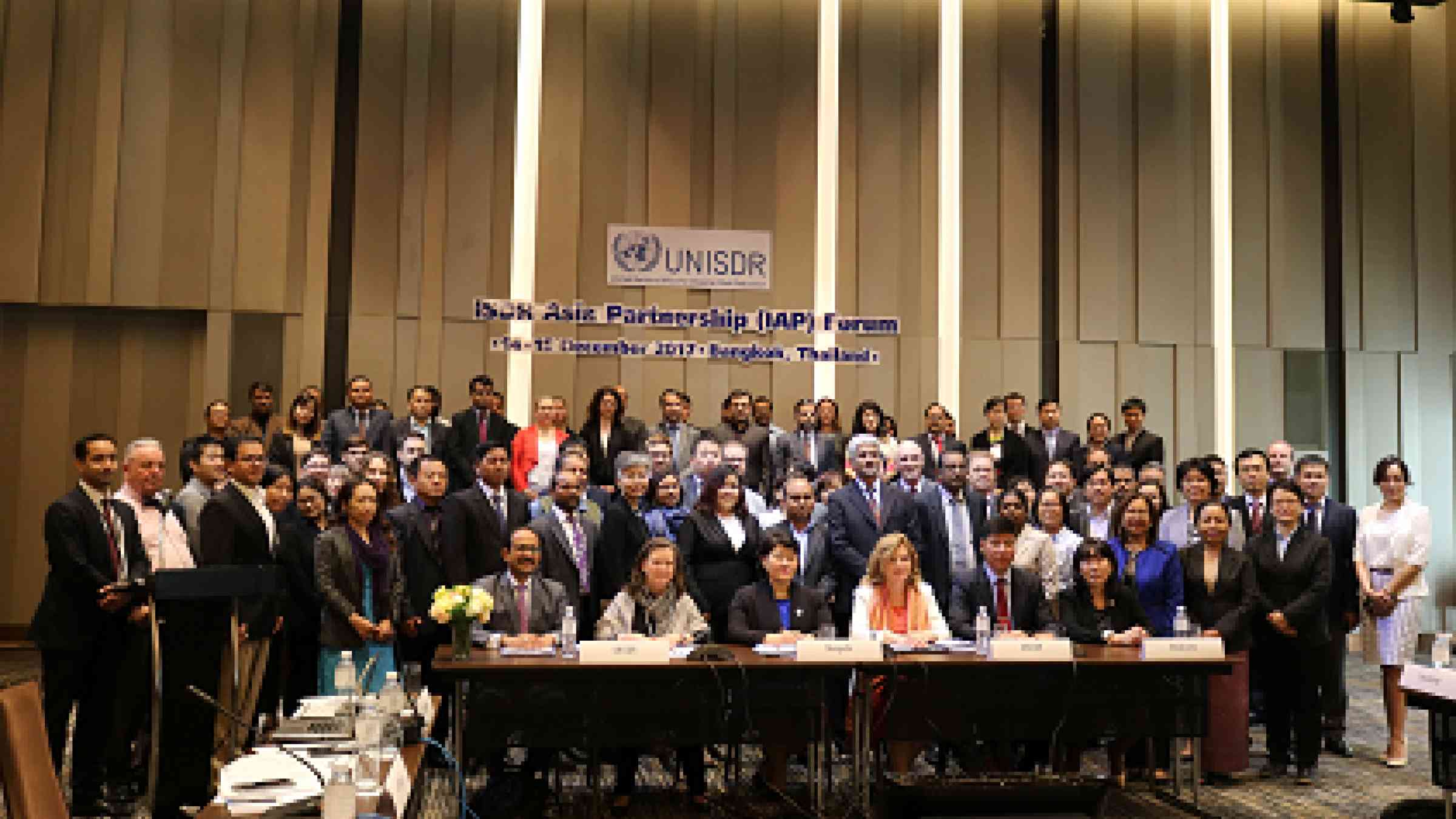Asia prioritizes Sendai Target (e)

BANGKOK, 15 December 2017 – Governments and stakeholder partners from across Asia have renewed their commitment to a substantial increase in the number of countries with national and local disaster risk reduction strategies by 2020.
The call for action on Target (e) of the Sendai Framework for Disaster Risk Reduction, the global plan to reduce disaster losses, was made this week at the ISDR Asia Partnership (IAP), an inter-governmental and stakeholder forum that meets biannually.
Officials from 19 governments, three inter-governmental regional organization plus representatives from various stakeholders have been meeting in Bangkok this week to review progress on disaster risk reduction in the region and to support preparations for the Asian Ministerial Conference on Disaster Risk Reduction 2018 (AMCDRR 2018), in Ulaanbaatar, Mongolia.
The IAP welcomed the focus of the AMCDRR 2018 on achieving target (e) under the overall conference theme ‘Preventing Disaster Risk: Protecting Sustainable Development’. It is one of seven Sendai Framework targets seeking to bring about a substantial reduction in disaster losses by 2030.
Countries represented were Afghanistan, Australia, Bangladesh, Bhutan, Cambodia, China, Democratic People’s Republic of Korea, India, Japan, Lao PDR, Malaysia, Maldives, Mongolia, Myanmar, Nepal, Pakistan, Sri Lanka, Thailand and Vietnam.
Ms. Sayanaa Lkhagvasuren, Senior Advisor to the Deputy Prime Minister of Mongolia, Mr. U. Enkhtuvshin, who is responsible for disaster risk reduction, said hosting the AMCDRR 2018 was a huge opportunity for both Mongolia and Asia.
“We are determined to demonstrate our country’s regional leadership on key aspects of DRR, including the achievement of target (e) as well as urban resilience and the importance of public-private partnerships,” Ms. Lkhagvasuren said.
“We are also using the AMCDRR as a way of increasing awareness of disaster resilience in our own country, right down to the local level.”
UNISDR Chief of Regional Office for Asia and the Pacific, Ms. Loretta Hieber Girardet heralded the IAP’s focus on practical recommendations as an example of regional coordination in action that will translate into a positive impact on protecting lives and livelihoods.
“The overall trend of increasing disaster risk reinforces the need to scale up implementation of the Sendai Framework. The IAP and AMCDRR 2018 are regional mechanisms that galvanize action in disaster resilience at the local and national level,” Ms. Hieber Girardet said.
The AMCDRR 2018 is being co-organized by the Government of Mongolia and UNISDR. It will take place in Ulaanbaatar 16-19 July 2018.
The Prime Minister of Mongolia, Mr. U. Khurelsukh, is UNISDR’s newest DRR Champion for Asia, receiving the award at the Global Platform for Disaster Risk Reduction, in Cancun, Mexico, in May this year. He continues to champion the DRR agenda particularly in terms of urban resilience and the role of youth as change agents.
The IAP was opened by Ms. Kirsi Madi, Director of UNISDR, and attracted 100 participants with representatives from governments, intergovernmental, UN and international organizations, business, academia, civil society, the Red Cross and Red Crescent and various other stakeholder groups and sectors.
Representatives provided technical and strategic input to the six main Technical Sessions for the AMCDRR 2018 that cover the four priorities of the Sendai Framework – understanding risk; governance; investing in DRR; and preparedness for response and build back better – as well as monitoring implementation of the Sendai Framework and coherence of the overall development agenda.